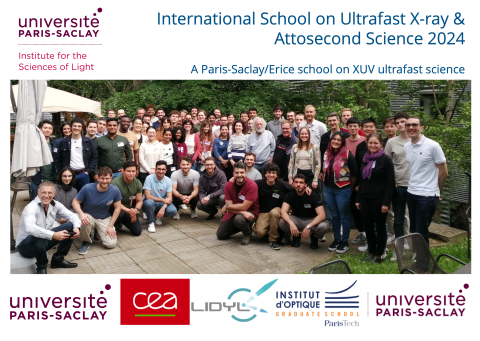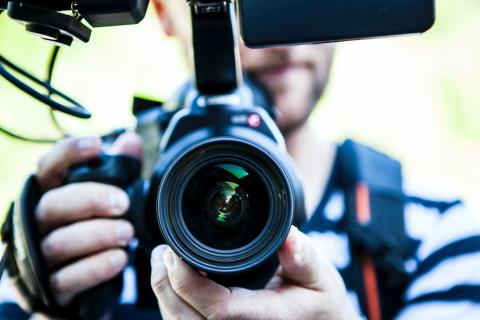
News - Institute for the Sciences of Light
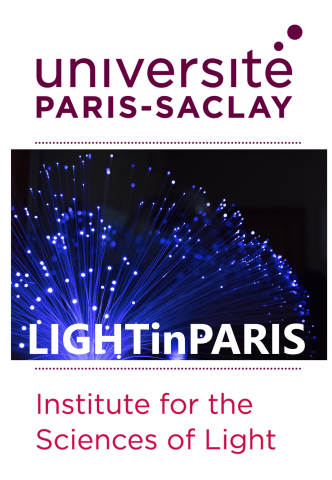
Selection of the COFUND LIGHTinPARIS project by the Horizon Europe MSCA Committee
The LIGHTinPARIS project, submitted by the Institute for the Sciences of Light, has been selected by the selection committee of the Horizon Europe MSCA COFUND 2023 call for projects.
This project will fund 16 theses in 2025 and 14 theses in 2026 in the field sciences of light. The call for thesis topics will be issued to HDRs at the start of the 2024 academic year. A total of 32 topics will be selected for inclusion in the call.
For more information on the LIGHTinPARIS 2025 call for thesis topics, please consult the PDF file below:
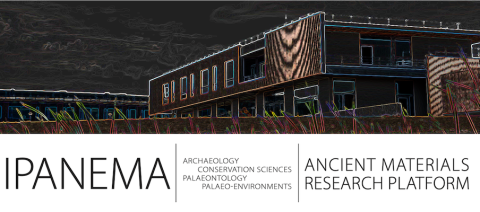
IPANEMA joins ISL
The Institut Photonique d’Analyse Non destructive Européen des Matériaux Anciens (IPANEMA) laboratory has recently joined the Institute for the Sciences of the Light.
This joint unit focuses on the characterization of ancient materials, using methods ranging from infrared to X-rays. IPANEMA supports synchrotron research by hosting external users and developing techniques for sample preparation and data analysis. The research is organized around two main themes: Multiscale Imaging and Spectroscopy (AXIS ISMA) and Information Extraction for Ancient Materials (AXIS XIAMA).
For more information click here
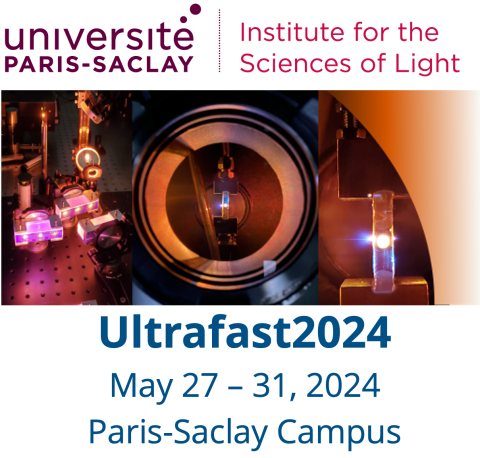
Flashback to Ultrafast2024: A week dedicated to ultrafast X-ray and attosecond science
From May 27 to 31, nearly sixty participants attended Ultrafast2024, hosted by the Institut d'Optique Graduate School for the second Paris-Saclay edition of this international school dedicated to ultrafast X-ray and attosecond science. Organized biennially by the Institut for the Sciences of Light, this school alternates with "The Frontiers of Attosecond and Ultrafast X-ray Science School" in Erice, Italy.
As in the first edition, the organizing committee meticulously crafted a program focused on fundamental concepts, making it ideal for beginners in the field. Eminent speakers delivered lectures and seminars, providing participants with valuable insights into current research.
A highlight of Ultrafast2024 was a special seminar by Professor Lou Di Mauro (Ohio State University) , who offered an insider's perspective on the history of the 2023 Nobel Prize in Physics, attended by Pierre Agostini, one of the laureates.
Until next edition, find out more about Ultrafast2024 here.
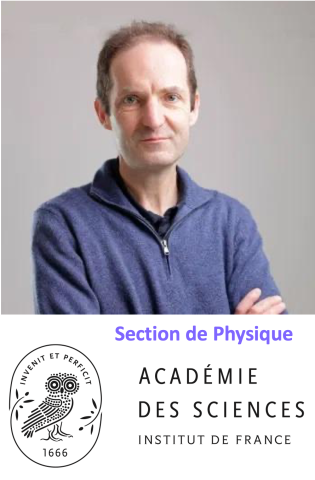
Congratulations : Antoine Browaeys joins the Académie des Sciences
The Institute for the Sciences of Light (ISL) is delighted to announce the results of the election of new members of the Académie des Sciences. Among those elected is Antoine BROWAEYS, CNRS Research Director at the Charles Fabry Laboratory (IOGS, CNRS, Université Paris-Saclay), who is entering the Physics section.
The ceremony to welcome the new members will take place on Tuesday 4 June 2024, under the dome of the Institut de France. The Académie des Sciences, which is dedicated to scientific excellence, adjusts its membership to the pace of scientific progress, thus promoting a diversified representation of scientific fields.
We warmly congratulate Antoine BROWAEYS on this prestigious recognition!
Useful links :
- Press release from the Académie Sciences - 12/12/2023,
- For more information, please consult this article.
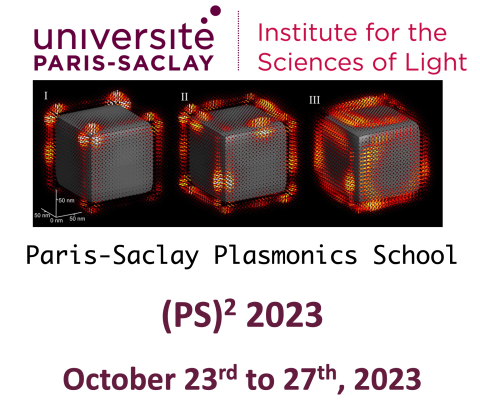
Spotlight on ISL's Paris-Saclay Plasmonics School 2023
The 2023 edition of the Paris-Saclay Plasmonics School, (PS)², organised by the Institut des Sciences de la Lumière (ISL), took place from 23 to 27 October on the Orsay campus of the Université Paris-Saclay. Some forty doctoral students, post-docs and young researchers from all over Europe attended.
The participants expressed their general satisfaction with the event. The poster sessions were particularly well received, encouraging a fruitful exchange of ideas between peers and renowned experts in the field. Informal moments, such as coffee breaks and convivial 'cheese and beer' sessions, facilitated the creation of professional networks.
Laboratory visits (LCF, C2N, LuMIn, ISMO, LPS and SPEC (CEA)) were very much appreciated, offering participants an insight into current research.
In short, (PS)² is becoming a benchmark event in the European plasmonics community, offering an international school for young researchers.
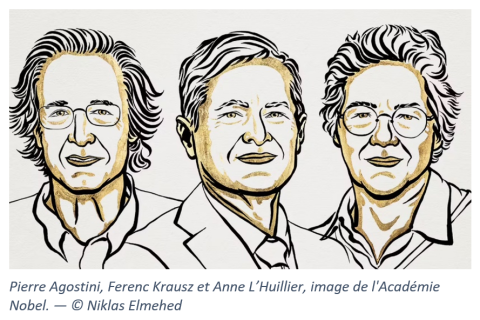
Anne L'Huillier, Pierre Agostini and Ferenc Krausz, the researchers behind attosecond laser pulses, win the 2023 Nobel Prize in Physics!
On 3 October 2023, Anne L'Huillier and Pierre Agostini were awarded the prestigious Nobel Prize in Physics for their ground-breaking work at the LIDYL fundamental research laboratory at CEA-Saclay's Iramis, along with Ferenc Krausz from the Max-Planck Institute for Quantum Optics in Munich.
Anne L'Huillier's scientific career began at the CEA Centre in Saclay, in the General Physics Department, in the Atomic and Surface Physics Service (DPhG/SPAS, now LIDYL), where she completed her doctoral thesis from 1982 to 1986 on the subject of "Multiphoton and multi-electron ionisation". In 1988, two years after her recruitment at CEA-Saclay, she published the discovery of the generation of high-order harmonics in gases. In 1991, she published a theoretical paper modelling this phenomenon. From 1995 onwards, Anne L'Huillier continued her research as a Professor at the University of Lund in Sweden, while maintaining close collaboration with her original laboratory.
Pierre Agostini defended his thesis at the University of Aix-Marseille in 1968. He then joined CEA-Saclay, where he remained until his retirement in 2002, followed by a position as Scientific Advisor until 2004. In 1979, Pierre Agostini published the first experimental observations of gas ionisation following a very intense infrared laser pulse. In 1994, his team's work paved the way for the RABBIT method, which measures the duration of an attosecond pulse. In 2001, his team published the observation of a train of 250 as pulses.
The work of Pierre Agostini and Anne L'Huillier, for which they were awarded the 2023 Nobel Prize, has led to the generation and characterisation of attosecond laser pulses (10-18 s). This is the tool needed to access the dynamics of electrons within matter (atoms, molecules, condensed matter, plasmas, etc.), with this ultimate temporal resolution. This major technological advance has become crucial for understanding many phenomena in the natural sciences, whether in physics, chemistry or biology.
Our warmest congratulations to the winners!
Find out more on the official website: https://www.nobelprize.org/prizes/about/prize-announcement-dates/
References:
News CEA-IRAMIS:
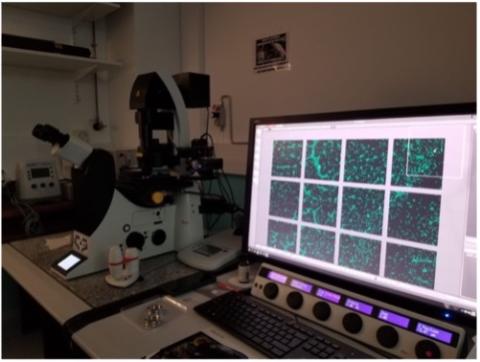
ChemPhysBio2023: An exciting week of learning and discovery organised by ISL and BioProbe!
The first Interdisciplinary Summer School Chemical and Physical Probes for Biology 2023: how to spy on cell dynamics? (ChemPhysBio2023) organised by the Institute for the Sciences of Light (ISL) et BioProbe of the Université Paris-Saclay (UPSaclay) took place from 3 to 7 July 2023 on the Orsay campus.
During this exciting week dedicated to learning at the crossroads of several disciplines, 23 participants, mainly PhD students from the fields of chemistry (32%), physics (32%) and biology (36%), had the opportunity to attend basic and advanced courses, as well as two conferences and three interdisciplinary workshops. In addition, they were able to put their knowledge into practice during two sessions supervised by UPSaclay researchers in their laboratories or on their platforms (ISMO, ICP, LuMIn, Imagerie Gif, MIC@Curie), giving them the opportunity to experiment with a wide variety of imaging techniques.
As well as learning from established scientists, participants were able to work on their communication skills with colleagues from other disciplines in dedicated workshops. They were able to put their new skills into practice directly during a very convivial poster session.
As the icing on the cake, the school's cultural event, organised thanks to the partnership between Paris-Saclay and the Centre Pompidou, enabled participants to visit the "Laboratoires / Observatoires" exhibition, guided by the artist Marina Gadonneix herself. The visit was greatly appreciated by all!
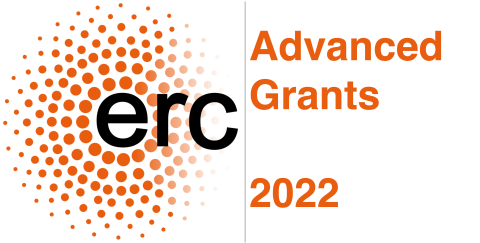
Two winners of the ERC Advanced Grants 2022 linked to ISL
Two winning projects at the Centre de nanosciences et nanotechnologies (C2N, CNRS, Université Paris-Saclay) linked to ISL have been awarded 2022 ERC Advanced Grants.
Delphine MARRIS-MORINI, professor at the University of Paris-Saclay at C2N, has been awarded a grant for the ELECTROPHOT project (Electro-optic frequency comb generation in the mid-infrared) and Laurent VIVIEN, CNRS research director at C2N, for the CRYPTONIT project (Crystalline Oxides Platform for Hybrid Silicon Photonics).
More information and all the results here.
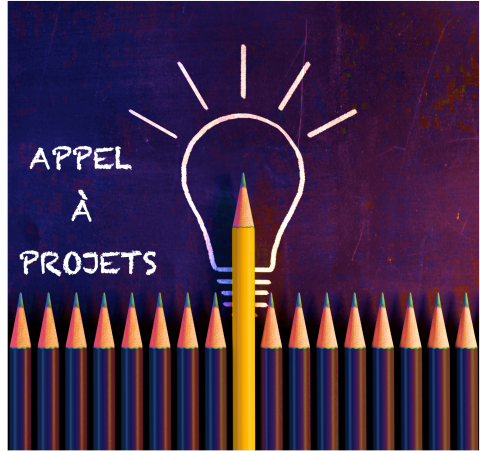
Project Call « Equipement-Recherche » 2023
We are delighted to announce the launch of the 2023 call for "Equipment-Research" projects from the Institute for the Sciences of Light of the Université Paris-Saclay. With a total budget of €150k, the aim is to support research projects on themes that cut across the Graduate Schools (maximum amount of €50k per project).
More information on the call for projects is available in the zip file.
The deadline for submission of the letter of intent is 11 April 2023 at 1pm (Paris time).
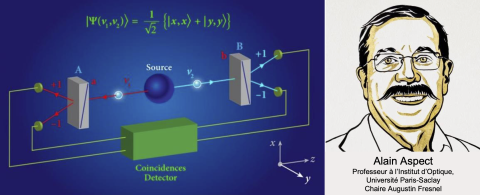
A look back at Alain Aspect's seminar organised by ISL, GS Physique and Centre Quantum
In partnership with the Quantum Center and the Graduate School of Physics, ISL organised a seminar led by Alain Aspect.
With nearly 500 participants, mainly physics students and staff from the Université Paris-Saclay, the event was a great success, filling the large amphitheatre at ENS Paris-Saclay. At the event, Alain Aspect gave a presentation entitled "From Einstein's questions to qubits: a new quantum revolution", which was none other than the one he used for his Nobel Prize in Physics 2022 award ceremony in Stockholm. His presentation elicited many questions and reactions from the audience, which, from a scientific point of view, made for a very interesting exchange!

Henri Vincenti, winner of the Gordon Bell Award 2022
The ACM Gordon Bell Prize 2022 has been awarded to the international team led by Henri Vincenti (LIDYL/CEA/Université Paris-Saclay) for their outstanding work in the field of PIC (Particle-In-Cell) simulations on Exascale-class supercomputers.
The Gordon Bell Prize is one of the most prestigious awards in the field of high-performance computing.
The team's PIC simulations were carried out on the Fugaku supercomputer in Japan, which currently holds the title of the world's fastest supercomputer. The simulations reached an unprecedented level of detail, with more than 1.2 trillion particles simulated in a single run. This achievement represents a major step forward in the field of plasma physics and provides essential information about the behaviour of plasma in fusion devices.
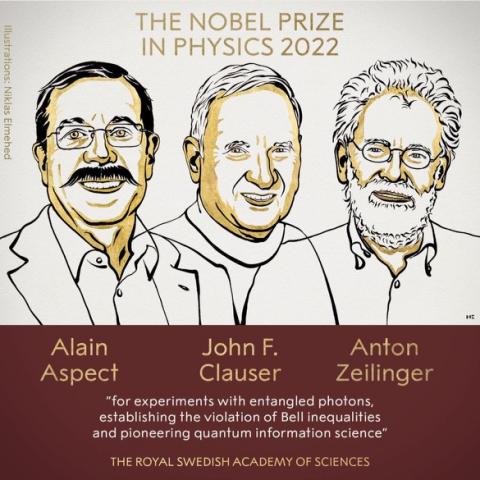
Nobel Prize in Physics awarded to Alain Aspect, John F. Clauser and Anton Zeilinger
Congratulations to the winners of the Nobel Prize in Physics, who have just been announced. The 2022 edition is shared equally between Alain Aspect, John F. Clauser and Anton Zeilinger and has been awarded to them for :
"experiments with entangled photons, establishing the violation of Bell inequalities and pioneering quantum information science".
Our warmest and most sincere congratulations go in particular to our colleague Alain Aspect, a pillar of the light science community on the Saclay plateau!
Alain Aspect is CNRS Emeritus Research Director at the Charles Fabry Laboratory (LCF) of the Institut d'Optique Graduate School / Université Paris-Saclay. He also holds the 'Augustin Fresnel' chair at the Institut d'Optique Graduate School / Université Paris-Saclay and is an associate professor at the Ecole Polytechnique.
For further information, visit: NobelPrize.org
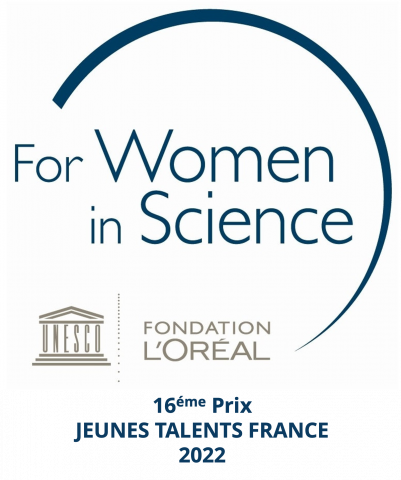
ISL doctoral student among the winners of the L'Oréal-UNESCO France 2022 Young Talent Prize
Anne NGUYEN is one of 35 exceptional young researchers selected as winners of the Oréal-UNESCO For Women in Science Young Talent Award France 2022.
Anne has been rewarded for her project entitled: "Incandescent metasurfaces for detection and communication in the infrared" in the Nanophotonics group of the Charles Fabry laboratory at the Institut d'Optique Graduate School.
Congratulations on this great achievement!
To find out more about the Young French Talents of the last 3 years → foundation website L'Oréal
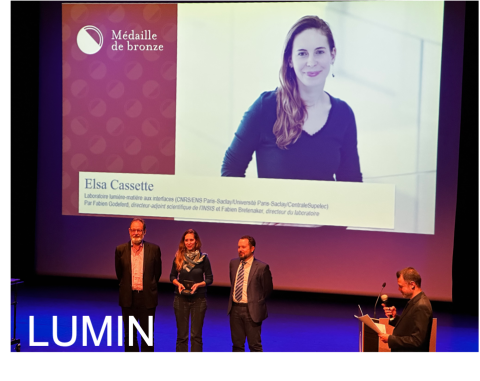
Elsa Cassette, CNRS 2022 bronze medallist
Elsa Cassette, a researcher in physical chemistry specialising in photophysics at the Lumière-matière aux interfaces (LuMIn) laboratory, has been awarded the 2022 CNRS Bronze Medal in recognition of her previous work at the LIDYL laboratory (CEA)!
Congratulations on this well-deserved recognition!
For more information, click here: CNRS

At ISL, talent comes in pairs - Two 2022 winners of the Jacques Herbrand Grand Prize (physics)
Each year, the Jacques Herbrand Grand Prize of the Académie des Sciences, worth 15,000 euros, is awarded to young researchers (under 35) in mathematics and physics alternately. On 18 October 2022, this prize was awarded to two researchers in the field of physics whose laboratories are members of the ISL.
Congratulations to Igor FERRIER BARBUT, CNRS Research Fellow at the Charles Fabry Laboratory (LCF - CNRS/Institut d’Optique Graduate School) and to Emmanuel FLURIN, CEA Engineer, in the Service de physique de l’état condensé (SPEC - CEA/CNRS), quantronique group !

DCP2022 Young Researcher Prize won by Federica Agostini
Federica Agostini, Associate Professor at Université Paris Saclay and member of the ICP's ThéoSim group, has been awarded the Young Researcher Prize by the Council of the Division of Physical Chemistry.
The prizes will be officially awarded at the SCF national conference in Nantes in 2023. On this occasion, the winners of the DCP 2022 Awards will have the opportunity to present their work in a special session.
Congratulations on this well-deserved distinction!

ISL has three young scientists among the winners of the ERC STARTING 2021 call for proposals
Among the 397 winners of the European Research Council's ERC STARTING 2021 call, three young ISL researchers have won grants to carry out their innovative research projects in the light sciences.
Funding of up to €1.5 million over 5 years will enable these talented scientists to build their own teams around their ambitious projects.
Congratulations to the three young scientists at the start of their careers who are behind these projects!
- Romain GENEAUX, SPINFIELD - Controlling spin angular momentum with the field of light, CEA Paris-Saclay, LIDYL
- Igor Ferrier-Barbut, CORSAIR - Controlled subradiance in atomic arrays, IOGS Palaiseau, LCF
- Emmanuel FLURIN, INGENIOUS - sINGle microwave photon dEtection for hybrid quaNtum Information prOcessing and quantUm enhanced Sensing, CEA Paris-Saclay, SPEC
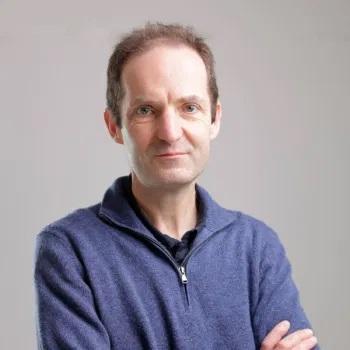
Antoine Browaeys, winner of the Alfred Verdaguer Prize - Fondation de l'Institut de France
Antoine Browaeys is a physicist and CNRS research director at the Charles Fabry Laboratory (Institut d'Optique Graduate School, Université Paris-Saclay, CNRS).
His research focuses on the manipulation of individual atoms trapped in optical tweezers whose interactions are controlled by laser. These systems make it possible to study the quantum behaviour of a small number of interacting atoms for quantum simulation or quantum optics applications. He is also co-founder and scientific director of Pasqal, an innovative start-up specialising in the development of quantum processors. His work has been awarded the CNRS 2021 Silver Medal.
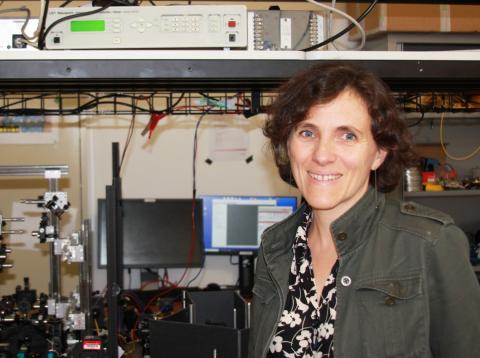
Pascale Senellart-Mardon, winner of the Grand Prix Mergier-Bourdeix
Pascale Senellart-Mardon is a physicist and CNRS research director at the Centre for Nanosciences and Nanotechnologies (C2N - Université Paris-Saclay, CNRS).
Her research lies at the frontier between nanotechnology, atomic physics and quantum optics. She is interested in the interaction between light and semiconductor nano-objects that behave like individual atoms. In doing so, her team is developing components for generating and manipulating light photon by photon, opening up a wide range of possibilities for quantum information processing.
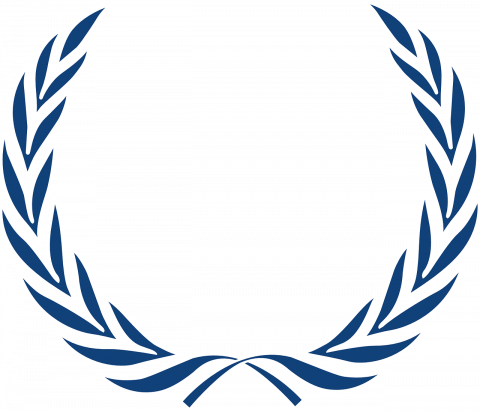
Lou Barreau, winner of the Louis Armand Prize
Lou Barreau is a chemist, lecturer at the Université Paris-Saclay and researcher at the Institut des Sciences Moléculaires d’Orsay (ISMO - Université Paris- Saclay, CNRS).
She studies the fundamental dynamics of electrons and atoms in molecules, on the scale of femtoseconds (10-15 s) to attoseconds (10-18 s), using ultra-short X-ray pulses produced by lasers. These experiments enable us to elucidate the very first instants of photochemical or photoionisation reactions.
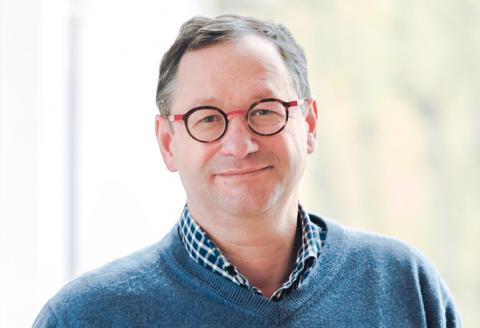
Jean-François Roch appointed senior member of the Institut universitaire de France
Jean-François Roch has been appointed a senior member of the Institut Universitaire de France (IUF). The mission of this institute is to promote the development of high-level research in universities and to strengthen interdisciplinarity.
He has been appointed for a period of 5 years from 1 October 2021. The IUF gives researchers time for research projects.
The research project proposed to the IUF is based on expertise developed over almost 20 years in diamond sensors for superconductivity under high pressure.
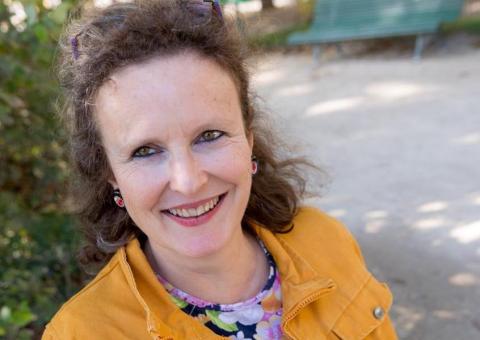
Jacqueline Bloch, Director of Research at C2N, is invited to the Académie des Sciences
Jacqueline Bloch, a researcher at the Centre de nanosciences et de nanotechnologies (C2N - Université Paris-Saclay, CNRS), is very proud to have been admitted to the Académie des sciences...
Research Events
The Institute for the Sciences of Light is pleased to announce that the 2nd Paris-Saclay edition of the International School on Ultrafast X-ray and Attosecond Science (Ultrafast2024) will take place from May 27 to 31, 2024, on the campus of the University of Paris-Saclay!
The successful Ultrafast2022, the inaugural International School on Ultrafast X-ray and Attosecond Science held at the Paris-Saclay campus in October 2022, has set the stage for its upcoming 2024 edition. With over 70 participants from across Europe, the event received an impressive overall satisfaction rating of 4.4/5!
The Ultrafast2024 program, designed for PhD students, Postdocs and early career academics, covers fundamental concepts, including High Harmonic Generation and Free Electron Lasers. Attendees will explore cutting-edge labs, attend lectures, and engage in informal exchanges. The schedule includes shared meals, extensive poster sessions, and a day to explore Paris.
Discover the programme and register for Ultrafast2024: https://ultrafast2024.sciencesconf.org
Apply by sending your CV before February 23 2024 !
The ISL is pleased to announce the first call for the "Paris-Saclay Plasmonics School", (PS)2 2023, which will take place from October 23 to 27, 2023 on the Orsay campus of the University of Paris-Saclay!
Apply by submitting your CV before July 13 2023 !
The goal of (PS)2 2023 is to gather together PhD students, post-docs and young academics working on plasmonics in laboratories around the world with leading experts in the field.
Speakers of international renown will discuss fundamental concepts, possible applications and open questions currently being addressed by the scientific community. All the speakers will have two hours for a tutorial presentation of an emerging topic and half an hour for a research seminar. They will be available during the week to meet the students.
In addition, 2 poster sessions will be organised to encourage scientific interactions between participants. The school will finish on Friday (October 27th) at noon, but students will be able to use their rooms until the morning of Saturday 28th at no extra cost and enjoy an evening in Paris.
Discover the programme and register for (PS)2 2023: https://ps2-2023.sciencesconf.org
The Institute for the Sciences of Light and Object Interdisciplinary BioProbe are organizing the first "Interdisciplinary Summer School Chemical and Physical Probes for Biology 2023: how to spy on cell dynamics?" (ChemPhysBio2023) from July 3 to 7, 2023 on the Orsay campus.
Numerous imaging strategies combining powerful probes with quantitative microscopy methods are being developed to understand molecular mechanisms in complex biological systems. This interdisciplinary school proposes to shed light on these different aspects from the viewpoints of chemists, physicists and biologists. It will also offer interdisciplinary workshops to improve communication and collaboration skills with colleagues from other disciplines as well as two half-days of practical work (hands-on sessions).
This school is intended for masters, doctoral students, post-doctoral students, young researchers and research engineers who are new to the field.
Extension of the application deadline to May 10th!
Website: https://chemphysbio2023.sciencesconf.org
Registration now open for the conference "Quantum Physics from Foundations to Innovations: Honouring Alain Aspect", to be held on 8 June 2023 at the Institut d'Optique Graduate School!
Entitled "Quantum Physics from Foundations to Innovations: Honouring Alain Aspect", the conference will retrace the career of Alain Aspect through talks (in English) on subjects to which he has made a major contribution and on the impact of his work in terms of technological developments.
Discover the programme and register here!
Registration is now open!


